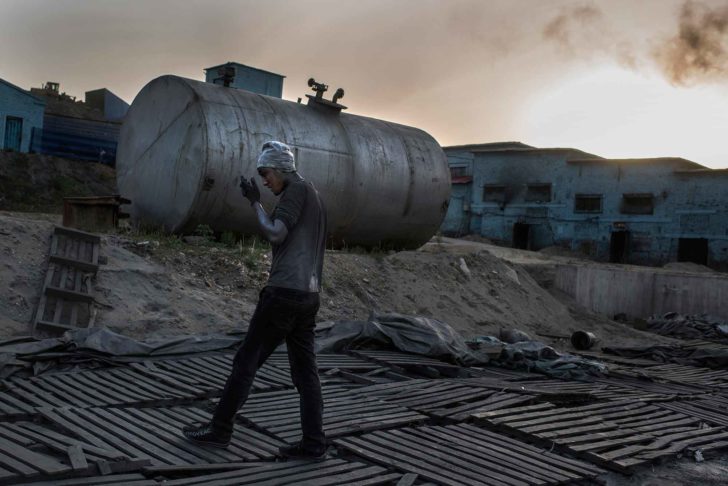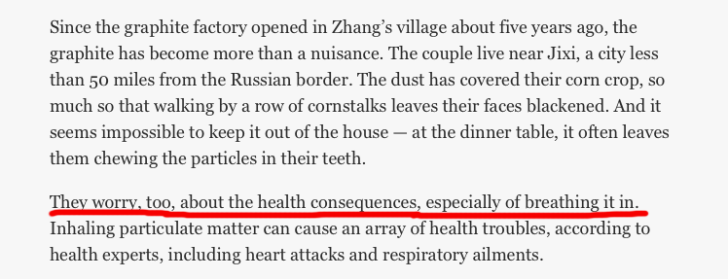Chinese air is dirty with graphite dust, but alarmist media can’t even report a single health effect.

Washington Post reporters visited five graphite plants and their villages in China. Though the air is filled with graphite dust, when it came to health effects the WaPo could only report “worry”…

and EPA junk science theory…

Notably missing from the article is even a claim that someone has died or suffered a health effect from the obviously high-level of carbon particles in the air. Surely if health effects had been claimed by the Chinese villagers, the WaPo woulf have spotlighted them.
Despite the filthy nature of the air, the reality is that carbon particles (i.e., fine particulate matter or PM2.5) are innocuous.
Further reading:
Significantly higher and/or involving chronic (as opposed to acute) exposures to particles of a different morphology = shard-like I suspect. Also the afflicted miners I suggest are hardly representative of a typical cross section of urban populations caught by the published epidemiological studies involving alleged exposures to PM10/2.5 determined on air sampled outdoors making comparisons of health effects and their ultimate causality difficult.
So, how many times greater was the level that caused pneumoconiosis in miners?
Ordinary crustal dust, sea salt and other naturally occurring, air borne particulate matter typically adding significantly to measured levels of PM10/2.5 presumably are also relatively harmless.
For this reason alone particulate matter mass is an unreliable indicator of potentially harmful effects due to air pollution.
As a carbon based life form. I doubt exposure to small amounts of carbon is going to kill anyone.
Time to demand the names of the “health experts.”